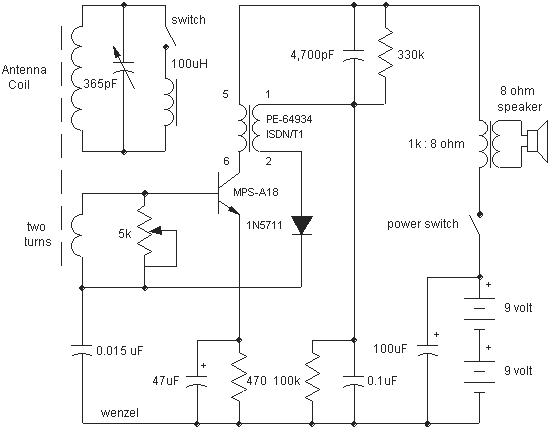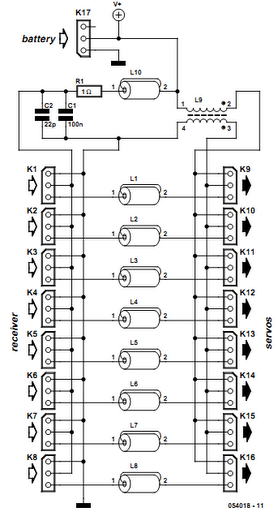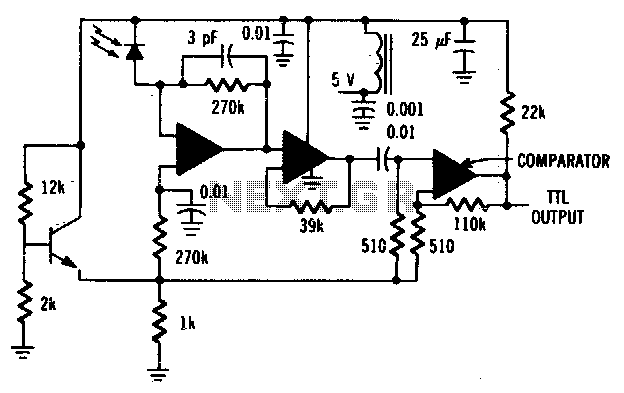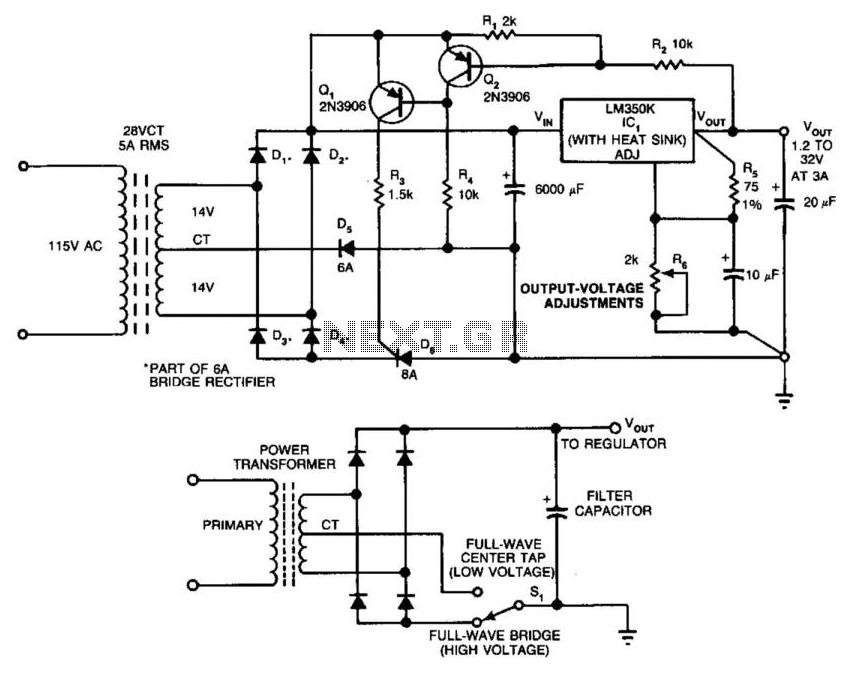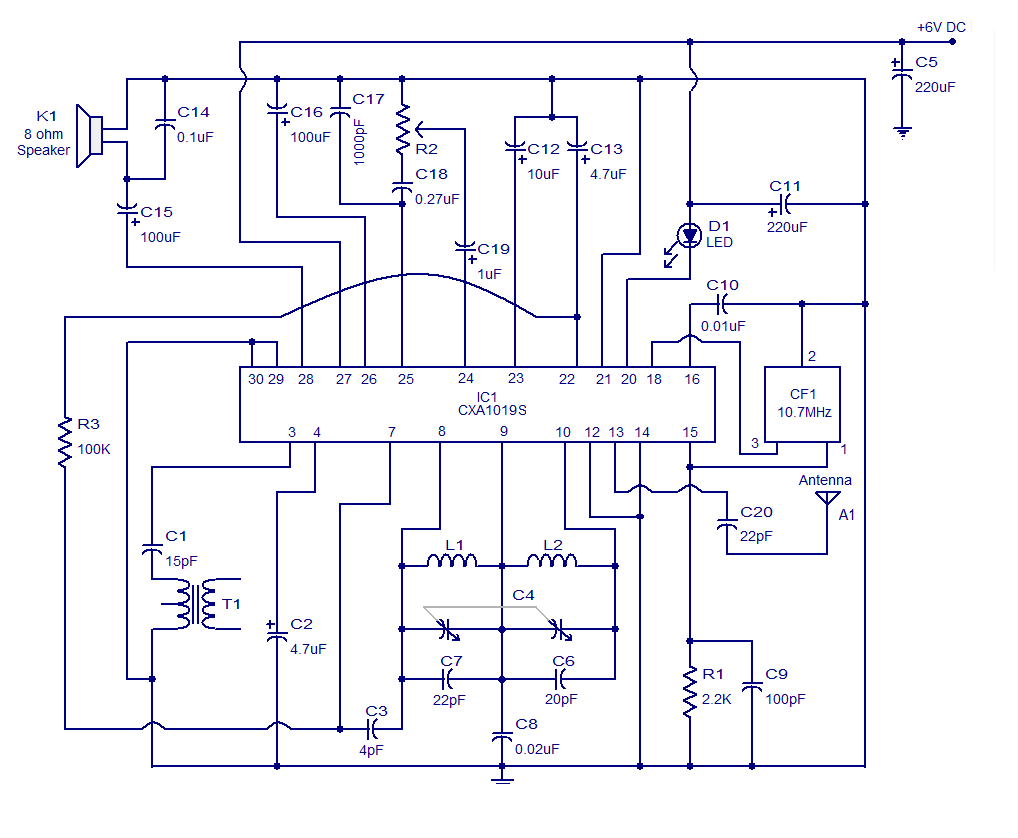
How to improve the selectivity of the FM radio receiver
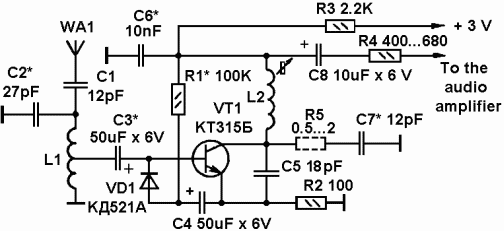
The FM radio receiver with PLL designed by A. Zaharov continues to attract the interest of radio amateurs. According to a publication in the magazine "Radio," one of the primary drawbacks of this type of detector is its low adjacent channel selectivity. This issue arises from the direct detection of strong signals by the base-emitter junction of transistors connected across an AC signal voltage source. To prevent direct AM demodulation of the signal, it is recommended to use an anti-parallel connection of diodes in the mixer circuit. The diode mixer can be connected either in parallel to the signal source or in series with it. To avoid direct demodulation in Zaharov's circuit, a diode must be connected in reverse direction across the base-emitter junction of the transistor VT1. However, this configuration is problematic because the diode would be blocked by the voltage of the base-emitter junction of the transistor. To address this issue, the diode should be connected in series with the base-emitter junction to DC, and in anti-parallel to AC. The locking range of this modified receiver is broader than that of previously described receivers. To reduce the Q factor of the resonant tank circuit L2C7, it is advisable to wind coil L2 with thinner wire (0.2 to 0.3 mm in diameter) or add an additional resistor R5 (0.5 to 2 ohms) into the tank circuit L2C7. The modified receiver utilizes coils similar to those found in FM receivers with PLL. Coil L1 is a formerless design with a diameter of 5 mm, a winding step of 1 mm, and consists of 6 turns of 0.5 mm wire (AWG 24). Coil L2 is wound on a frame with a diameter of 6.5 mm, featuring 9 turns of 0.27 mm wire (AWG 30) and a winding step of 1 mm. This coil incorporates a slug made from an aluminum pipe measuring 20 mm in length and 5 mm in diameter. The capacitors C2 and C7 should be adjusted to tune the receiver to the VHF band (65.8 to 73 MHz). The resistor R1 should also be adjusted to achieve maximum sensitivity of the receiver. To prevent self-oscillation at audio frequencies, the capacitance of the diode VD1 must be significantly smaller than the emitter junction capacitance of the transistor VT1. This requirement is met by using diodes KD521 or KD522 from that series. The value of capacitor C6 is contingent on the receiver's operating mode (mono or stereo); the schematic diagram indicates a capacity suitable for mono, while for stereo, it should be reduced to one-fifth. The FM receivers with PLL have been tested in Minsk, Belarus, successfully receiving all four local FM radio stations without interference. However, during pauses, interference from television signals on the first and third channels was noted, which was eliminated after modification. The anti-parallel connection of diode VD1 and the base-emitter junction of transistor VT1 functions as a signal limiter for high-power radio station signals. In the modified receiver, an electronic tuning circuit can be employed, utilizing transistor KT315 (with any letter index) in place of the varicap. This tuning circuit, powered by 3 volts, can cover the entire standard VHF FM band (65.8 to 73 MHz).
The FM radio receiver circuit designed by A. Zaharov embodies an innovative approach to enhancing selectivity and sensitivity in FM reception. The integration of a phase-locked loop (PLL) allows for precise tuning and stability. The use of an anti-parallel diode connection serves as a crucial modification to mitigate AM demodulation, thus improving the receiver's performance in environments with strong adjacent signals.
The construction of the coils L1 and L2 is critical; the choice of wire gauge impacts the inductance and resistance, which in turn affects the Q factor of the resonant tank circuit. The specified dimensions and winding techniques ensure optimal performance in the VHF band. The incorporation of an aluminum slug within coil L2 aids in tuning stability by providing a magnetic core that enhances inductance while minimizing unwanted oscillations.
The tuning capacitors and resistors are adjustable to cater to varying signal conditions and desired sensitivity levels. The selection of diodes with appropriate capacitance characteristics is essential for maintaining the integrity of the signal path and ensuring that the receiver operates efficiently without self-oscillation.
Testing in urban environments demonstrates the receiver's capability to function effectively in real-world scenarios, highlighting its robustness against interference. The option to implement an electronic tuning circuit broadens its usability, allowing for fine-tuning across the entire VHF FM spectrum, thus making it a versatile choice for radio enthusiasts and professionals alike.The FM radio receiver with PLL designed by A. Zaharov [1] still attracts the attention of radio amateurs. As noted in a publication of the magazine "Radio" [2, 3], one of the major drawbacks of this type of detectors is the low adjacent channel selectivity. The reason for this is the direct detection of strong signals by base-emitter junction of t ransistors connected across a source of AC signal voltage. To prevent direct AM demodulation of the signal it is recommended to use anti-parallel connection of diodes in the mixer circuit. The diode mixer can be connected in parallel to the signal source (Fig. 1) or in series with it (Fig. 2). To prevent direct demodulation of the signal with this method, in the circuit of A. Zaharov it takes to connect a diode in reverse direction across the base-emitter junction of the transistor VT1 (Fig.
3). But we can not do it, because in this case, the diode will be closed by the voltage of the base - emitter junction of the transistor. To overcome this difficulty it takes to connect the diode in series with the base - emitter junction to DC, and in anti-parallel to AC (Fig.
4). The locking range of this modified receiver is wider then the locking range of previously described receivers. It is useful to reduce the Q factor of the resonant tank circuit L2C7. To do this, wound the coil L2 with thinner wire (0. 2. 0. 3 mm in diameter (AWG 32. 29), or add into the tank circuit L2C7 an additional resistor R5 (0. 5. 2 ohms). In the modified receiver the coils are used similar to those used in circuit of the FM receivers with PLL.
The coil L1 is formerless with the diameter of 5 mm, the winding step is 1 mm and the number of turns is 6 of the wire 0. 5 mm (AWG 24). The coil L2 is wound on a frame with the diameter of 6. 5 mm, it has 9 turns of the wire with diameter of 0. 27 mm (AWG 30). The winding step is 1 mm. This coil L2 has a slug made of aluminium pipe with the length of 20 mm and diameter of 5 mm. Tweak the capacitors C2 and C7 to tune the receiver to the VHF band (65. 8. 73 MHz). Tweak the value of the resistor R1 to get maximum sensitivity of the receiver. To prevent self oscillation at audio frequency, the capacitance of the diode VD1 should be considerably smaller than the emitter junction capacitance of the transistor VT1.
This condition is fully satisfied by using diodes KD521 or KD522 (any of this series). The value of the capacitor C6 depends on the operating mode of the receiver (mono or stereo). In the schematic diagram shown in Fig. 4, the shown capacity is intended for a mono version. For the stereo version, it should be five times less. The FM receivers with PLL has been tested in city of Minsk, Belarus. The receiver was able to receive all four local FM radio stations with no interference between them, but in the pauses were heard interference of the television signal of the first and third TV channels. After modification the receiver the interference are gone. The anti-parallel connection of the diode VD1 and the base-emitter junction of the transistor VT1 work as signal limiter circuit for the signals of power radio stations.
In the modified receiver can be used an electronic tuning circuit (Fig. 5), in which a transistor KT315 (with any letter index) is used instead of the varicap. This tuning circuit powered by 3 volt can overlap whole the standard VHF FM band(65. 8. 73 MHz). 🔗 External reference
The FM radio receiver circuit designed by A. Zaharov embodies an innovative approach to enhancing selectivity and sensitivity in FM reception. The integration of a phase-locked loop (PLL) allows for precise tuning and stability. The use of an anti-parallel diode connection serves as a crucial modification to mitigate AM demodulation, thus improving the receiver's performance in environments with strong adjacent signals.
The construction of the coils L1 and L2 is critical; the choice of wire gauge impacts the inductance and resistance, which in turn affects the Q factor of the resonant tank circuit. The specified dimensions and winding techniques ensure optimal performance in the VHF band. The incorporation of an aluminum slug within coil L2 aids in tuning stability by providing a magnetic core that enhances inductance while minimizing unwanted oscillations.
The tuning capacitors and resistors are adjustable to cater to varying signal conditions and desired sensitivity levels. The selection of diodes with appropriate capacitance characteristics is essential for maintaining the integrity of the signal path and ensuring that the receiver operates efficiently without self-oscillation.
Testing in urban environments demonstrates the receiver's capability to function effectively in real-world scenarios, highlighting its robustness against interference. The option to implement an electronic tuning circuit broadens its usability, allowing for fine-tuning across the entire VHF FM spectrum, thus making it a versatile choice for radio enthusiasts and professionals alike.The FM radio receiver with PLL designed by A. Zaharov [1] still attracts the attention of radio amateurs. As noted in a publication of the magazine "Radio" [2, 3], one of the major drawbacks of this type of detectors is the low adjacent channel selectivity. The reason for this is the direct detection of strong signals by base-emitter junction of t ransistors connected across a source of AC signal voltage. To prevent direct AM demodulation of the signal it is recommended to use anti-parallel connection of diodes in the mixer circuit. The diode mixer can be connected in parallel to the signal source (Fig. 1) or in series with it (Fig. 2). To prevent direct demodulation of the signal with this method, in the circuit of A. Zaharov it takes to connect a diode in reverse direction across the base-emitter junction of the transistor VT1 (Fig.
3). But we can not do it, because in this case, the diode will be closed by the voltage of the base - emitter junction of the transistor. To overcome this difficulty it takes to connect the diode in series with the base - emitter junction to DC, and in anti-parallel to AC (Fig.
4). The locking range of this modified receiver is wider then the locking range of previously described receivers. It is useful to reduce the Q factor of the resonant tank circuit L2C7. To do this, wound the coil L2 with thinner wire (0. 2. 0. 3 mm in diameter (AWG 32. 29), or add into the tank circuit L2C7 an additional resistor R5 (0. 5. 2 ohms). In the modified receiver the coils are used similar to those used in circuit of the FM receivers with PLL.
The coil L1 is formerless with the diameter of 5 mm, the winding step is 1 mm and the number of turns is 6 of the wire 0. 5 mm (AWG 24). The coil L2 is wound on a frame with the diameter of 6. 5 mm, it has 9 turns of the wire with diameter of 0. 27 mm (AWG 30). The winding step is 1 mm. This coil L2 has a slug made of aluminium pipe with the length of 20 mm and diameter of 5 mm. Tweak the capacitors C2 and C7 to tune the receiver to the VHF band (65. 8. 73 MHz). Tweak the value of the resistor R1 to get maximum sensitivity of the receiver. To prevent self oscillation at audio frequency, the capacitance of the diode VD1 should be considerably smaller than the emitter junction capacitance of the transistor VT1.
This condition is fully satisfied by using diodes KD521 or KD522 (any of this series). The value of the capacitor C6 depends on the operating mode of the receiver (mono or stereo). In the schematic diagram shown in Fig. 4, the shown capacity is intended for a mono version. For the stereo version, it should be five times less. The FM receivers with PLL has been tested in city of Minsk, Belarus. The receiver was able to receive all four local FM radio stations with no interference between them, but in the pauses were heard interference of the television signal of the first and third TV channels. After modification the receiver the interference are gone. The anti-parallel connection of the diode VD1 and the base-emitter junction of the transistor VT1 work as signal limiter circuit for the signals of power radio stations.
In the modified receiver can be used an electronic tuning circuit (Fig. 5), in which a transistor KT315 (with any letter index) is used instead of the varicap. This tuning circuit powered by 3 volt can overlap whole the standard VHF FM band(65. 8. 73 MHz). 🔗 External reference
